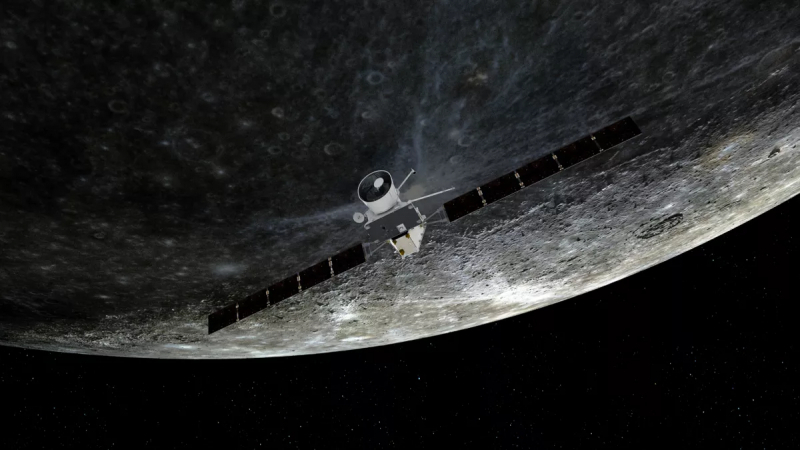BepiColombo probe will reach Mercury’s orbit 11 months late


The European-Japanese BepiColombo probe will fly close to Mercury for the fourth time on September 4. However, due to problems with the engines, the device will be able to enter the planet’s orbit 11 months later than originally planned. BepiColombo was expected to reach orbit in December 2025, but scientists have now reported that this will not be possible until November 2026.


Image source: ESA
The BepiColombo probe was launched into space using an Ariane 5 launch vehicle in 2018. The device is designed to study Mercury, and its path to the planet initially included one flight around the Earth, two flights over Venus and six over Mercury itself.
However, the original plan had to be revised because, due to a failure that occurred in April this year, the probe’s engines are no longer operating at full power. Mission engineers discovered “unexpected electrical currents” between the Mercury Transfer Module (MTM) solar panel and the device that distributes power between the probe’s modules.
«After several months of studying the situation, we have concluded that the MTM engines will operate below the minimum thrust required to enter orbit around Mercury in December 2025,” Santa Martinez, head of the BepiColombo mission at the European Space Agency (ESA), said recently. Martinez).
It is noted that the problem with the BepiColombo engines does not jeopardize the entire mission. The engineers were able to plan a new flight path taking into account the fact that the vehicle’s engines could not operate at full power. Under the new plan, the spacecraft will fly 35 km closer to Mercury today than originally planned, eliminating the need for the engines to fire up at full power on its fifth flyby. During its sixth flyby, the probe will enter a new trajectory that will allow it to reach the orbit of Mercury in November 2026.
The BepiColombo mission consists of two orbiters developed by ESA and the Japan Aerospace Exploration Agency (JAXA). In total, they carry 16 scientific instruments. After entering Mercury orbit, the spacecraft will separate and will be used to study the planet for a year. If successful, the mission may be extended for another year.
Recent Posts
China’s XPeng Releases $20,000 MONA M03 Max Electric Car With Free Autopilot
Chinese company XPeng has unveiled the MONA M03 Max, a car with an AI-powered autonomous…
Sony lifts regional restrictions from Stellar Blade on PC, and a demo version of the game is released on Steam
The developers of the post-apocalyptic action game Stellar Blade from the South Korean studio Shift…
The Slormancer — Diablo Without the Frills. Review
Played on PC Over the last couple of years, the Diabloid subgenre has clearly entered…
Modder Already Added Two-Player Mode to Elden Ring Nightreign That Developers Forgot About
Less than a day has passed since the release of the cooperative roguelike action game…
Microsoft delays development of portable Xbox, will focus on partner consoles
According to Windows Central, Microsoft has postponed development of its own portable gaming console with…
A demo of Dispatch, a comedy game about a superhero agency from the former developers of Tales from the Borderlands and The Wolf Among Us, has been released on Steam
Developers from the American AdHoc Studio, founded by former Telltale Games, Ubisoft and Night School…